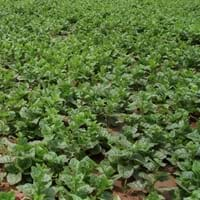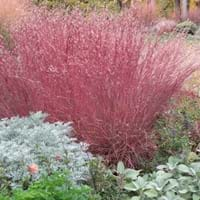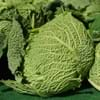Life Span
Perennial
Annual
Origin
Southeastern Asia, India
North America, United States, Northeastern United States, Mid-Atlantic United States, Southeastern United States, North-Central United States, Central United States, South-Central United States, Southwestern United States, Mexico
Types
Red Malabar Spinach, Green Malabar Spinach
Greener Pastures
Habitat
Hot climate regions, Humid climates
Grassland
USDA Hardiness Zone
Not Available
4-9
AHS Heat Zone
12*7
10 - 3
Sunset Zone
H1, H2, 3a, 3b, 4, 5, 6, 7, 8, 9, 10, 11, 12, 13, 14, 15, 16, 17, 18, 19, 20, 21, 22, 23, 24
1a, 1b, 2a, 2b, 3a, 3b, 4, 5, 6, 7, 8, 9, 10, 11, 12, 13, 14, 15, 16, 17, 18, 19, 20, 21, 22, 23, 24
Habit
Vining/Climbing
Clump-Forming
Flower Color
Red, Green, Orange Red
Purple
Flower Color Modifier
Bicolor
Bicolor
Fruit Color
White, Ivory
Not Available
Leaf Color in Spring
Green, Light Green
Light Green
Leaf Color in Summer
Green, Dark Green
Light Green
Leaf Color in Fall
Purple, Gray Green
Red, Purple
Leaf Color in Winter
Purple, Gray Green
Tan
Leaf Shape
Heart-shaped
Grass like
Plant Season
Spring, Summer, Fall, Winter
Summer, Fall, Winter
Sunlight
Full Sun, Partial Sun, Partial shade
Full Sun, Partial Sun
Type of Soil
Clay, Loam
Loam, Sand
The pH of Soil
Neutral
Acidic, Neutral, Alkaline
Soil Drainage
Well drained
Well drained
Bloom Time
Not Available
Late Summer, Early Fall
Tolerances
Drought
Drought
Where to Plant?
Ground
Ground
How to Plant?
Leaf Cutting, Seedlings
Divison, Seedlings
Plant Maintenance
Medium
Medium
Watering Requirements
Do not let dry out between waterings, Requires consistently moist soil
Medium
In Summer
Average Water
Lots of watering
In Spring
Moderate
Moderate
In Winter
Average Water
Average Water
Soil pH
Neutral
Acidic, Neutral, Alkaline
Soil Type
Clay, Loam
Loam, Sand
Soil Drainage Capacity
Well drained
Well drained
Sun Exposure
Full Sun, Partial Sun, Partial shade
Full Sun, Partial Sun
Pruning
Remove damaged leaves, Remove dead leaves
Remove damaged leaves, Remove dead branches, Remove dead leaves
Fertilizers
Nitrogen
All-Purpose Liquid Fertilizer
Pests and Diseases
Aphids
Red blotch
Plant Tolerance
Drought
Drought
Flower Petal Number
Single
Single
Foliage Texture
Medium
Fine
Foliage Sheen
Glossy
Matte
Attracts
Not Available
Butterflies
Allergy
Not Available
Not Available
Aesthetic Uses
Not Used For Aesthetic Purpose
Showy Purposes
Beauty Benefits
Not Available
Not Available
Environmental Uses
Air purification
Air purification
Medicinal Uses
Folate, Iron, Low calories, Low Fats, Rich in Potassium, ß-carotene, Vitamin A, Vitamin C
Not Available
Part of Plant Used
Leaves
Leaves, Root
Other Uses
Used As Food
Showy Purposes
Used As Indoor Plant
No
No
Used As Outdoor Plant
Yes
Yes
Garden Design
Container, Edible, Groundcover, Herb / Vegetable, Tropical, Vine
Cutflower, Dried Flower/Everlasting, Groundcover, Mixed Border, Rock Garden / Wall
Botanical Name
BASELLA alba
ERAGROSTIS spectabilis
Common Name
Ceylon Spinach, Malabar Spinach, Red Malabar Spinach
Purple Lovegrass
In Hindi
पोई
eragrostis spectabilis
In German
Malabarspinat
eragrostis spectabilis
In French
L’épinard de Malabar
eragrostis spectabilis
In Spanish
espinaca de Malabar
Eragrostis spectabilis
In Greek
Malabar Σπανάκι
eragrostis spectabilis
In Portuguese
Malabar espinafre
Eragrostis spectabilis
In Polish
Szpinak Malabar
Eragrostis okazałe
In Latin
Spinach Malabar
Eragrostis spectabilis
Phylum
Magnoliophyta
Magnoliophyta
Class
Eudicotyledones
Liliopsida
Order
Caryophyllales
Cyperales
Family
Basellaceae
Poaceae
Clade
Angiosperms, Core eudicots, Eudicots
Angiosperms, Commelinids, Monocots
Tribe
Not Available
Eragrostideae
Subfamily
Not Available
Chloridoideae
Number of Species
Not Available
Not Available
Season and Care of Malabar Spinach and Purple Lovegrass
Season and care of Malabar Spinach and Purple Lovegrass is important to know. While considering everything about Malabar Spinach and Purple Lovegrass Care, growing season is an essential factor. Malabar Spinach season is Spring, Summer, Fall and Winter and Purple Lovegrass season is Spring, Summer, Fall and Winter. The type of soil for Malabar Spinach is Clay, Loam and for Purple Lovegrass is Loam, Sand while the PH of soil for Malabar Spinach is Neutral and for Purple Lovegrass is Acidic, Neutral, Alkaline.
Malabar Spinach and Purple Lovegrass Physical Information
Malabar Spinach and Purple Lovegrass physical information is very important for comparison. Malabar Spinach height is 2.40 cm and width 24.00 cm whereas Purple Lovegrass height is 45.70 cm and width 5.10 cm. The color specification of Malabar Spinach and Purple Lovegrass are as follows:
Malabar Spinach flower color: Red, Green and Orange Red
Malabar Spinach leaf color: Green and Light Green
Purple Lovegrass flower color: Purple
- Purple Lovegrass leaf color: Light Green
Care of Malabar Spinach and Purple Lovegrass
Care of Malabar Spinach and Purple Lovegrass include pruning, fertilizers, watering etc. Malabar Spinach pruning is done Remove damaged leaves and Remove dead leaves and Purple Lovegrass pruning is done Remove damaged leaves, Remove dead branches and Remove dead leaves. In summer Malabar Spinach needs Average Water and in winter, it needs Average Water. Whereas, in summer Purple Lovegrass needs Lots of watering and in winter, it needs Average Water.





